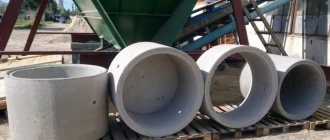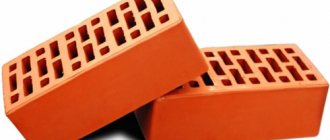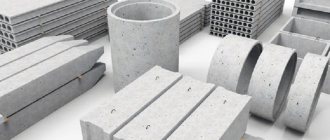Cement silo We have been producing silos since 1998.
The company's highly qualified specialists have extensive experience in this field. For the development and production of equipment, innovative technologies and high-quality materials are used, which allows us to successfully compete in the market with foreign companies. The company offers a wide range of products: silos for cement and other bulk materials, screw conveyors, filters, sensors, as well as other similar equipment and components.
Currently the warehouse has silos of 20, 40, 60 and 120 cubic meters. That is, shipment occurs immediately!
with prices for silos and components.
To order silos write to or call
Our production
We have been developing and manufacturing cement silos and warehouses for 17 years.
The equipment is designed using special computer programs in which 3D models are created, and parts are cut out on an industrial laser cutting machine made in Germany.
Welding of elements is carried out externally and internally. The use of modern technologies and developments ensures exact compliance of the equipment with the drawings. The cement silo of our production fully complies with existing standards and is distinguished by reliability, strength, durability and high quality.
Selection criteria
The cement silo is selected taking into account the required capacity of the warehouse, the productivity of the technological line for the production of concrete or reinforced concrete products. In particular, experts take into account the following main characteristics of the equipment:
- Maximum permissible cement loading level.
- Turnover of cement mixture.
- Permissible ambient temperature range.
The selection of cement silos is greatly influenced by the following requirements and recommendations:
- The location of the cement silo must fully comply with fire safety standards.
- The minimum volume of cement that a silo can accept must be no less than a ten-day consumption rate. This is due to the risk of stopping production due to a failure in the supply of bulk construction materials.
- The presence of additional equipment that eliminates the stagnation of materials inside the storage container can significantly increase work efficiency.
- When choosing equipment and a site for its placement, it is necessary to provide space for the access of freight transport.
- The presence of a protective coating that protects against corrosion can significantly extend the life of the storage container.
- If the silo is often used for unloading material, the standard gate should be replaced with a screw conveyor at the ordering stage.
- To frequently change the location of the silo, you should choose a mobile version of the process unit. This will help save time and money on moving the silo.
- The availability of a complete set of design and installation documentation is one of the attributes of productive subsequent operation.
« to the list of articles
Our works
Silos are installed at many construction enterprises in Russia, including large aerated concrete plants built using German HESS AAC technology.
Photos of the installation of silos at an aerated concrete plant in St. Petersburg. The volume of silos is 120 cubic meters. The customer is JSC Stroykomplekt. The silos were produced by the Stroy-Beton plant.
- see the news about the shipment of silos for a large project
How to properly store cement in bags?
To preserve the physical properties of bulk construction material and minimize economic losses, it is important to adhere to the following rules:
- Do not allow bags to come into contact with walls/floors. This requirement is relevant in an unheated room where condensation often forms.
- Use pallets.
- Maintain low air humidity (30-45%).
- Maintain a temperature regime of at least +5°C (negative temperatures are unacceptable).
- Ventilate the room regularly (a properly functioning ventilation system will prevent stagnation of air masses and reduce humidity).
- Lay layers of bags crosswise, preferably wrapped in plastic wrap.
- Do not store cement of different brands in one place.
We comply with these storage rules, so our customers receive high-quality and fresh raw materials that fully comply with the declared properties.
Product characteristics
All silo parts and supporting frame are made of high quality steel. Double welding of seams is used - outside and inside. This ensures the reliability and durability of the equipment when operating in any climatic conditions. For the manufacture of parts, steel with a thickness of 6-10 mm is used in the lower parts of the silo and from 4 mm in the upper parts.
| The color option in the photo is standard, custom painting is possible | An Italian WAM filter is installed on the silo roof | Level sensors are installed at the top and bottom, electrical wiring is done |
Construction of silos for cement
A cement silo is a special cylindrical hopper, which is hermetically sealed with a lid and equipped with ventilation holes and filters, a receiving and dispensing device, and other additional mechanisms and equipment. The lower part of the container has a cone shape and is closed with a special valve - a gate. Cement silos are mounted in a vertical position, which makes it possible to effectively use the force of gravity.
For ease of maintenance, the cylindrical container is equipped with a stationary ladder, which is installed inside the bunker. A ladder for maintenance personnel is also mounted on the outer surface of the tank. The silos are loaded using compressed air from special cement trucks. Dispensing of cement is carried out by opening a rotary gate with a mechanical or manual drive. To effectively move cement inside the storage facility, special electric vibrators or compressed air supply inside the bunker are used.
Typical volumes and models
In our company you can buy silos for storing cement with a volume of 8 to 300 cubic meters. m. The weight of stored cement is calculated depending on the volume:
- 8 cu. m. - 10 tons (diameter - 2.4 meters, height 5 meters, weight 2 tons).
- 20 cu. m. - 26 tons (diameter - 2.4 meters, height 8.5 meters, weight 3.75 tons).
- 40 cu. m. - 52 - tons (diameter - 2.4 meters, height 13 meters, weight 5.5 tons).
- 60 cu. m. - 90 tons (diameter - 2.9 meters, height 13.2 meters, weight 8 tons).
- 120 cu. m. - 156 tons (diameter - 3.8 meters, height 15.7 meters, weight 12 tons).
The advantage of our products is an affordable price for cement silos with high quality.
Cement silo drawing
Types of bunker storage
Initially, only stationary reinforced concrete silos existed in nature, as in the photo.
Nowadays they can still be found in old factories. However, today metal structures are more in demand, which, if necessary, can be quickly translated or assembled with your own hands directly on the construction site.
All steel bunker structures are divided into several types.
Collapsible
Such silos for storing cement are the most popular. The storage facilities are collapsible structures, consisting of: a conical funnel with a feed mechanism and the container itself for storing bulk mixtures (in some models, the “cans” are also a collapsible structure). When disassembled, such structures take up minimal space, so they are very convenient to transport.
Such bunkers can be disassembled and reassembled many times. For ease of assembly, the 2 main parts of the storage container are equipped with reliable technological fastenings.
One-piece
The production of non-demountable silos is also very popular due to the high reliability of the finished bunkers. Such structures are not afraid of even severe external damage to the hull. If the seams in collapsible models can crack, then the integrity of these structures will be very difficult to break.
However, it is worth considering that the capacity of solid silos does not exceed 75 tons. Larger structures are not manufactured, since they cannot be transported to the installation site.
Mobile
This type of cement silo is lightweight and has a horizontal container arrangement. Thanks to this, it can be easily placed on a wheeled chassis and transported to the construction site as a trailer, as shown in the photo. However, the cost of such models is significantly higher than their analogues. The stops on mobile silos are retractable.
Container
By and large, container silos are mobile bunkers, but larger. Typically, such containers are used for large industrial construction projects. Due to their increased weight, container silos are transported on trains or cargo ships rather than on wheeled chassis.
Warehouses
A silo warehouse is easy to maintain, but such structures are used much less frequently due to the complexity of installing structures of this type. Standard support is not enough. Therefore, in order to install a silo warehouse, it is necessary to use additional supporting pile structures.
When purchasing a bunker for storing cement mixtures, it is necessary to take into account not only the type and configuration of the structure, but also other important nuances.
Additional equipment and options
The list of additional equipment is agreed upon with the customer and mounted on the silo during its installation.
- Painting in the color chosen by the customer (up to 3 colors per silo) – RUB 28,600. It is possible to apply inscriptions, logos, etc., subject to additional agreement. (If painting is not ordered, be sure to paint it on site to protect against corrosion)
- Rotary valve (WAM, Italy).
- Silo safety valve (WAM, Italy).
- Air filter (WAM, Italy).
- Level sensors (WAM, Italy).
- Aeration jet (WAM, Italy), 6 pieces per silo are required, required for devices larger than 40 cubic meters. m.
- Screw conveyor for cement 5 meters (WAM, Italy).
Silo equipment
A typical configuration of a cement silo includes a wide range of mechanisms, fixtures and devices that ensure the functioning of production equipment:
- A container for storing cement, made in the form of a cylinder with a cone-shaped bottom or a container with a flat bottom.
- Support structures on which the storage container is installed.
- A loading pipe through which the hopper is filled.
- Gate valve with manual or mechanical drive.
- Pneumatic equipment for loading silos.
- A filter at the top of the container provides protection from excess moisture.
- Stairs and platforms for service personnel installed on storage tanks and support structures.
- Fencing elements.
As additional equipment, which greatly simplifies the technological process and ensures safety conditions for people, the following is used:
- Butterfly valve.
- Valve to eliminate excess pressure.
- Vibrators for collapsing the vault.
- Sensors for upper and lower filling levels.
- Remote control.
- Screw conveyor.
- Butterfly valve.
- Other elements of automation of the cement storage process.
Cement warehouses: stages and advantages of automation
In order to turn a cement warehouse into a modern automated complex, it is necessary to equip it with a system of sensors integrated into an automated control system (ACS). Most often, such work is carried out as part of a comprehensive modernization and automation of the turnkey BSU site, which has been successfully carried out in the CIS for ten years by the company IC PROMSERVICE. Modernization of a cement warehouse usually begins with resolving the issue of loading the silo with cement. The most commonly used are pneumatic screw pumps or belt elevators. The IC PROMSERVICE company has developed and offers ready-made solutions for installing or optimizing both the first and second loading methods. Thanks to high professionalism and long-term experience, the qualified employees of the IC PROMSERVICE company will select the option that is most suitable for your BSU site and specifically for your cement silos. The important issue of monitoring and accounting for cement consumption will be solved by the IC PROMSERVICE company with the help of not only a modern installation dispenser systems and controllers, but also specialized software, which is a complete, automatically filled database. This database contains information about the supplier of the cement batch, its brand, time and parameters of arrival and consumption. Data is stored in the database for an unlimited time, and can be requested, received and printed at any time. The system also allows you to export data in any necessary form to other programs that are used for control, accounting or accounting needs. The advantages of the automated approach are obvious: there is no need to rely on the variable “human factor”; you can establish full control over the processes that occur at the cement warehouse level, and thereby optimize costs and increase profits. It is with the company IC PROMSERVICE that your costs for warehouse automation will be minimal, and the results will be optimal. This is proven by the experience of hundreds of successful modernizations carried out by the company in the CIS countries. Provided that the cement warehouse is connected to an automated management and control system, the possibility of cement theft is eliminated - attempts to make unauthorized changes to the operation of the system are recorded and monitored.
Relationship between sand quality and concrete properties
The properties and behavior of sand in concrete mortar are determined by its initial state at the time of addition. For project construction and mortar production, the best solution is to buy river sand with delivery, since it is this type of filler that ensures the preservation of the properties of the monolith. In addition to the shape of the grains and their chemical composition, a number of other quality indicators of construction sand are taken into account.
- Related characteristics are the density and moisture content of construction sand. The average density should be in the range of 1.5 - 1.65 kg/m3. The indicator is calculated without compaction, therefore it is called bulk density. The standard moisture content is 4%, but most concrete mortar formulations are made for a moisture content of 1%. Therefore, it is customary to use river sand with a density of 1.45 kg/m3 of medium and coarse fractions (2-5 mm).
- Type of sand for preparing building concrete mortars - in project construction it is customary to use sand of river origin, which is well distributed in the mortar due to the round shape of the sand grains. This gives the mass homogeneity and subsequently serves as the basis for uniform stress distribution. In addition, river sand contributes to the correct hardening of the monolith due to its shape.
- Cleanliness of the sand - the absence or minimal amount of dust and clay guarantees the strength and speed of setting of the monolith. Sticky impurities bind cement when interacting with water, which negatively affects the properties of the finished monolith. It is desirable that the total amount of impurities in the mass of sand does not exceed 5%.
- The ability to preserve properties - packaging that prevents getting wet, dirty and freezing best protects sand from damage during transportation and storage. To do this, you can buy river sand in 40 kg bags and use it as needed, storing it in a covered area.
When sand is supplied, it is accompanied by documentation describing the main characteristics that must comply with GOST 8736-93.
- print version
- 1
Humidity of bulk materials in open warehouses
Re: Humidity of bulk materials in an open warehouse
Post by Karinka » Mar 16, 2009, 10:53 pm
Re: Humidity of bulk materials in an open warehouse
Re: Humidity of bulk materials in an open warehouse
Post by ro_ » Mar 16, 2009, 10:53 pm
Dear Natalya Nikolaevna, when calculating emissions from warehouses of building materials (crushed stone, sand, GPS, etc.), we assume the dust area in terms of 12.8; 11.7; 10.8 m2, respectively; and then even with a humidity of about 5% we fit. We justify the accepted area by the fact that on the construction site of the facility (we mainly design gas stations), on average there can be a “heap” of building material poured out by one dump truck with a carrying capacity of 10 tons. And we only calculate dust blowing, although this is incorrect, because We are not considering unloading material from, say, 150 vehicles delivering construction material.
The nuances of storing cement
The condition of components has a direct impact on the quality of any design. In particular, in the manufacture of reinforced concrete elements, such a parameter as the shelf life of cement in bags is important. If the storage conditions of the packaging were violated or the shelf life of the material has expired, you cannot count on a reliable design.
Two types of expiration dates
Each package of material indicates the date of manufacture and the guaranteed duration of storage of cement under normal conditions. However, if the climate in the warehouse is not observed, the properties of cement change even within the period specified by the manufacturer. For this reason, it is better to choose a dry binder personally, making sure that it has not turned into stone or crumpled due to dampness or depressurization of the bag.
Main types of units
Today, well-known manufacturers produce several types of cement silos, which have their own characteristics and characteristics. The two main differentiating criteria are the type of silo placement and the type of structure itself. Let's look at this in more detail.
Silo structure.
Based on the type of placement, silos are usually divided into mobile and stationary. The names largely speak for themselves here. As a rule, mobile silos can be moved to another location if necessary, even despite their significant weight. They are usually equipped with wheels or special mechanisms for moving. Stationary installations cannot be freely moved. They usually contain the maximum amount of cement and are located in specially equipped protected areas.
Based on the type of design features, silos are divided into collapsible and integral units. The collapsible silo can be used either as a whole or at the expense of its individual parts. This is a good option for businesses that have limited financial resources. Collapsible cement silos are much easier to repair. But they break much more often than solid ones.
One-piece units have a fairly strong body that is almost impossible to disassemble. They are the most resistant to all kinds of mechanical damage, as well as breakdowns. The only caveat is to avoid reinforced concrete casings, as they will not provide proper aeration of the cement.
Content
- Causes of dry cement caking
- How to protect cement from caking and lump formation?
- Where to buy the right cement silo?
- Conclusion
At concrete plants, cement is stored in special bunkers - silos. This is modern equipment that provides optimal conditions for storing dispersed materials.
Cement silos differ from each other in volume and equipment. It is important that the storage size matches the production capacity of the RBU. Then, the bunker will be completely empty within a week, the dispersed mixture will not cake due to excessive pressure of the upper layer.
Caking is the process of adhesion of particles of dry material to each other, the formation of dense monolithic lumps. If stored improperly or without an aeration system, building material may stick to the walls of a cement silo or inside the cement tank.
How to protect cement from caking and lump formation?
Cement caking can be avoided only by eliminating the reasons that cause cement particles to stick together and form lumps.
Firstly,
it is necessary to equip the silo with an aeration system to loosen the dry dispersed material. Through special nozzles, air under pressure penetrates into the container, loosens the dry cement powder, and prevents its particles from sticking together.
Secondly,
It is important to choose the correct size of the cement silo. Dry powder should not remain inside the hopper for more than 1-2 weeks. If the powder is not consumed during this time, then you need to periodically loosen the dry material.
To protect the walls from adhesion of dispersed material, auxiliary equipment of a cement silo is used, for example, a vibrator, a roof breaker.
Third,
The cement storage must be completely sealed. Dry powder cakes much slower than wet powder.
A cement silo is a temporary storage facility for dispersed powder. When the hopper is quickly unloaded, the dry material does not have time to be compressed under pressure.
Wet powder, on the contrary, under the influence of the press sticks together into lumps, becomes unsuitable for use, and makes unloading difficult.
Fourthly,
You cannot mix dry cements of different brands. Some dispersed powders increase in volume during storage. Cement powders with large fractions are stored longer without forming lumps than dry mixtures with small particles.
To ensure proper storage of dispersed materials, it is necessary to purchase a high-quality cement silo equipped with effective additional equipment.











